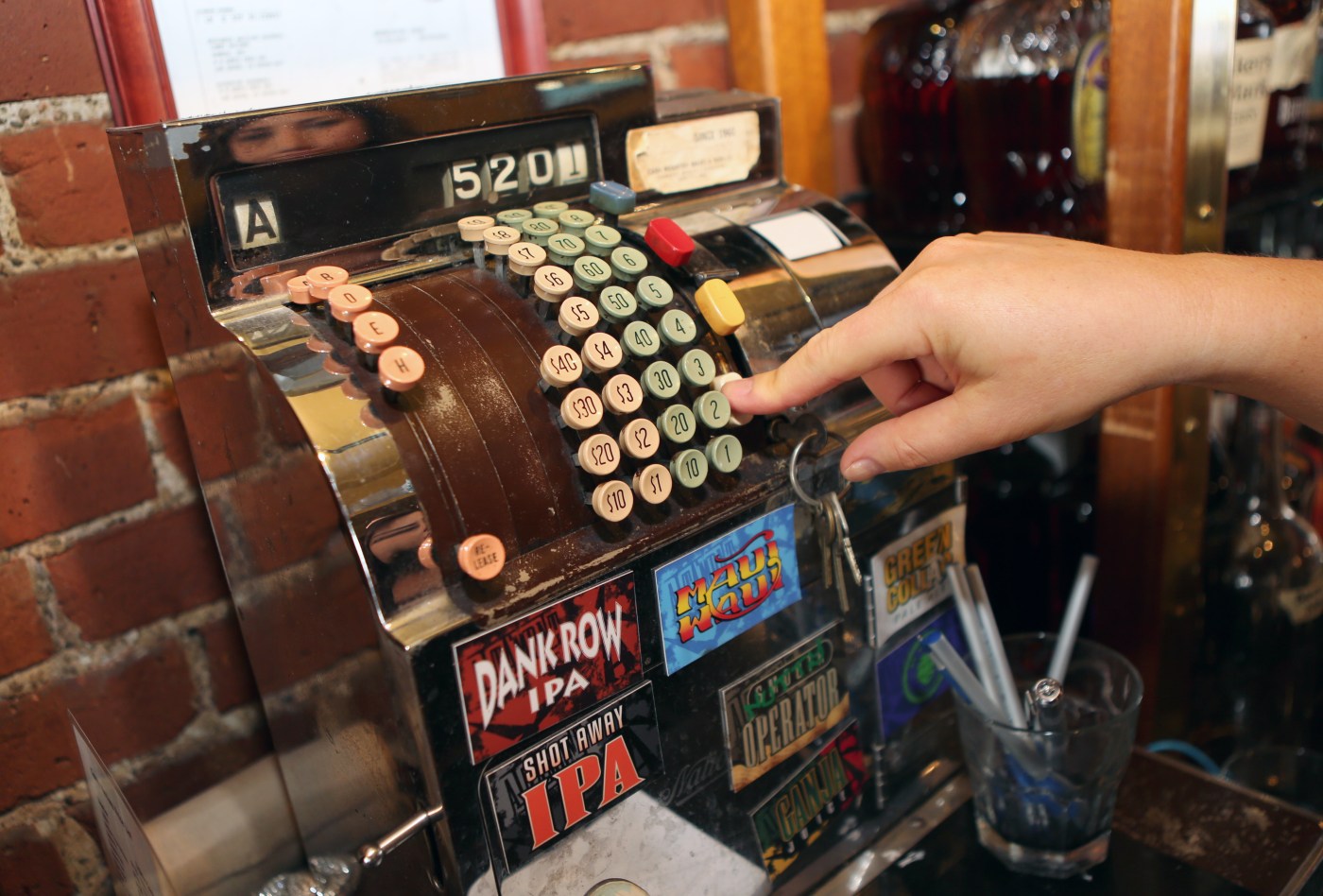
Editorial: Unpacking those confusing sales tax ballot measures. Here’s our take.
Click here for a complete list of our election recommendations.
Nine cities in the East and South Bay areas have local sales tax measures on Tuesday’s ballot.
Those taxes would stack on top of the base sales taxes levied by the state, county taxes and in some cases existing city taxes.
Here’s how it works:
• State sales tax is 7.25%. The state keeps 6%, 0.25% goes to county transportation funds, and 1% usually goes to cities.
• Counties add 1.5% to 3% for items such as transportation, county services and health care. Currently, Alameda County adds 3%, the most of any California county; Contra Costa County adds 1.5%; and Santa Clara County adds 1.875%.
• Cities can add more. Seven Alameda County cities have added 0.25% to 0.5%. In Contra Costa County, most cities have added 0.5% to 1.5%. Some Santa Clara County cities have added up to 0.25%.
Alameda County’s state-record 3% addition explains why it has six cities at 10.75%, the highest sales tax rate in the state. But one Contra Costa city has also eclipsed 10%, and another aims to do so in Tuesday’s election.
To translate into real money, a 10% sales tax equates to 10 cents for every dollar of purchases, $100 on a $1,000 television set, or $4,000 on a $40,000 car. In California, sales tax applies to purchases of tangible personal property. Prescription medicines and most groceries are exempt.
Here are our recommendations on the nine city sales tax measures in Alameda, Contra Costa and Santa Clara counties:
Alameda County
K1 – Hayward – No
Hayward is one of the six Alameda County cities that leads the state with a total sales tax rate of 10.75%.
That includes the city’s existing 0.5% levy, which Hayward voters added in 2014. The city share expires in 2034. Measure K1 would extend it to 2054.
Much like with the 2014 measure, which we supported, Hayward officials plan to use the Measure K1 extension for capital projects and operational services. For the capital projects, they are hoping to borrow money and repay with sales tax revenue.
City officials should pare back their list of projects, which they have yet to finalize, so they can borrow money for a shorter length of time.
An extension of the sales tax until 30 years from now is just too long. Sales taxes should have shorter sunset periods so voters can weigh in on the necessity. Voters should reject Measure K1.
PP – Pleasanton – Yes
Measure PP would add 0.5% to the sales tax in Pleasanton for 10 years, bringing the total, when combined with the state and Alameda County portions, to 10.75%.
That would tie Pleasanton with six other Alameda County cities for the highest total sales tax rate in the state. That’s not the cities’ fault; blame Alameda County.
Pleasanton needs the $10 million that Measure PP would bring in each year. City costs have risen faster than revenues. Forecasts show the city faces a cumulative deficit over the next eight years of $110 million.
Measure PP has drawn strong opposition. But opponents’ alternatives would be fiscally reckless.
They propose tapping two city trust funds earmarked to cover required future payments for promised employees pensions and retiree health benefits. The city prudently established those funds. Dipping into them now would only create larger budget problems later.
Unlike many Bay Area cities with, for example, parcel taxes and bonds backed by property taxes, Pleasanton currently has no voter-approved revenue measures. Measure PP would be the first, and it has a reasonable sunset period. Voters should approve it.
Contra Costa County
G – El Cerrito – No
El Cerrito adds an exceptionally large city sales tax of 1.5%, making the combined tax, including the state and Contra Costa share, 10.25%. Only about 30 of California’s 483 cities have a city sales tax as high as 1.5%.
The city’s sales tax comes from two different ballot measures. The first, approved in 2008 at 0.5%, is permanent. The second, originally also for 0.5%, was doubled to 1% by voters in 2014 and extended to 2027 after a deceptive taxpayer-funded city ballot campaign.
Measure G would make the latter tax permanent. City Attorney Sky Woodruff’s “impartial analysis” says the measure would continue “until ended by voters,” but the cumbersome process for residents to do that effectively makes it permanent.
El Cerrito has a troubled history of exceptionally high taxes and horrible fiscal management. It is an example of exactly why voters should be able to regularly review the taxes cities impose.
H – Lafayette – Yes
Lafayette does not currently have a separate city sales tax. So, the rate for purchases in Lafayette is currently 8.75%, a combination of the state rate of 7.25% and Contra Costa County rate of 1.5%.
Measure H would add a city tax of 0.5% for seven years, bringing the total to 9.25%. The money raised, estimated at $2.4 million annually, would just about cover the city’s projected budget shortfall for each of the next four years.
The city has no other voter-approved taxes, except for a bond measure approved in 1995 to repair and reconstruct city roads. Those bonds will be paid off next year.
Measure H is reasonable, given its modest amount, the sunset provision and the lack of other outstanding voter-approved taxes. The challenge for City Council members will be to corral the budget over the next seven years so they don’t have to ask voters for a sales tax extension.
I – Pinole – No
If Measure I passes, Pinole would join El Cerrito with a 1.5% city sales tax, among about the top 30 in the state. The combined total, with the state and Contra Costa portions, would be 10.25%.
Pinole already has a 1% city sales tax from two prior voter-approved measures, each for 0.5%. Measure I would increase that to 1.5%. There is no sunset provision for Measure I or the existing 1% portion.
Like for El Cerrito, Pinole’s wording on the ballot and in City Attorney Eric Casher’s “impartial analysis” claims the measure would continue “until ended by voters.” That’s effectively permanent.
Casher’s analysis has other misleading and inaccurate information.
It says that the city currently “only” receives “2% of the revenue generated” by the existing sales tax. Actually, the city receives a tax of 2% of sales, which is more than 20% of the revenue generated by the total sales tax.
The 2% tax he mentioned consists of the 1% share most cities receive from the state share plus the 1% city tax Pinole already levies.
Casher doesn’t explain that the latter is because Pinole voters already have approved two prior half-cent sales tax measures and that Measure I would be the third permanent tax. (The city also has an 8% tax on utility bills that has no end date.) Casher didn’t write an impartial analysis. He’s putting his thumb on the scale.
We understand that cities, including Pinole, might need additional revenue. But officials should first trim some of the city’s expenses, including its overly generous retiree health care plan for city employees that’s like those many local governments eliminated or never had.
The answer is not another permanent sales tax increase through a misleading ballot measure.
N – San Ramon – Yes
San Ramon currently does not have a separate city sales tax. Measure N would impose one, at 1%, for 10 years. That would bring the total, with the state and Contra Costa County shares, to 9.75%.
The $16 million generated would go to the general fund. It should be enough to cover the city’s budget shortfalls projected for the next five years that result in part from troubling revenue sharing deals the city struck with the county in 1986 and 1994.
The money is needed, but city officials should use the 10-year period to resolve the structural budget shortfall so they don’t need an extension a decade from now.
Santa Clara County
C – Gilroy – No
Measure C would establish Gilroy’s first city sales tax, setting it at 0.25%. Added to the state and Santa Clara County levies, the total would be 9.375%.
Unlike other sales tax measures in the South Bay and East Bay this election, Gilroy’s is designated for a specific purpose — public safety, specifically police, fire and ambulance service.
Because of that restriction, under California election law, Measure C requires two-thirds approval, not a simple majority, for passage. The Measure C tax would be permanent; it has no expiration date.
The lack of a sunset provision might make sense if there were guarantees the money would be used as suggested. The city’s population has grown nearly 30% since 2007, but city staffing, including public safety, is just about where it was 18 years ago.
The city Measure C information material says Gilroy needs 15 new police positions and 17 new Fire Department positions. But the legal language of the measure gives wide latitude to spend the money on, say, police and firefighter raises or public safety infrastructure, not necessarily to permanently boost staffing.
We would have happily engaged with the city on these issues, but the city manager declined to provide information we sought. He referred us to the city website and told us to file records requests for more information — not a practical way to function during a compressed election season, nor a reassuring sign of transparency.
Without a sunset provision or tough safeguards on spending of the money as promised, Measure C should be defeated.
J – Milpitas – Yes
Milpitas has a modest 0.25% city sales tax, making the combined tax 9.375% when the state and Santa Clara County portions are added.
The city sales tax, approved in 2020, lasts until early 2029. Measure J would extend it until early 2037, about 12 years from now.
While that is a long sunset period, the city’s budget management and forecasting seem cautious, and the sales tax is an important part of it. Given the modest size, the prudent budget management and the inclusion of a sunset date, voters should approve Measure J.
K – Campbell – No
Campbell currently has a permanent city sales tax of 0.25%, approved by voters in 2008. Measure K would add another permanent 0.5%, bringing the city sales tax to 0.75%.
That would bring the total tax, including the state and Santa Clara County share, to 9.875%. The city portion and the total would be the highest in the county.
If there were an expiration date on Measure K and solid reasoning for the increase, it could be palatable. Unfortunately, neither is the case.
First, the measure would continue “until ended by voters” — language used in some other cities that effectively means it’s never going away.
Second, the amount of the tax sought is beyond the city’s immediate needs. The tax would raise $7 million annually, but the general fund structural deficit it aims to solve is roughly half that amount and projected to taper off in fiscal years 2030 and 2031.
Related Articles
Editorial: Voters, here’s what they’re trying to hide about local bond measures
Editorial: In Berkeley, elect Ishii mayor for needed calm, respectful leadership
Editorial: Recall Alameda County DA Pamela Price. Here’s why.
Editorial: Antioch needs a mayor who won’t divide the city
Editorial: San Ramon voters should pick Armstrong for mayor, Shetty for council
How the rest of the money would be spent is unclear. It seems that city officials are also looking for money to address deferred maintenance and future capital improvements. But there is little detail, which is problematic because Measure K has no restrictions on the use of the funds and the tax would be collected indefinitely.
Measure K should have had a sunset date and more specificity about how the money would be spent.
Finally, voters should not be swayed by the lack of opposition arguments in the ballot booklet. The City Council set an arbitrarily early deadline of Aug. 13 for submitting arguments.
It seems like an unnecessary move to silence dissent. The deadline was just two business days after the date for the city to turn the measure in at the elections office and nine days before arguments are usually due to the county. Even the city attorney, who was involved with the drafting of the measure, had six more days to prepare his impartial analysis.


